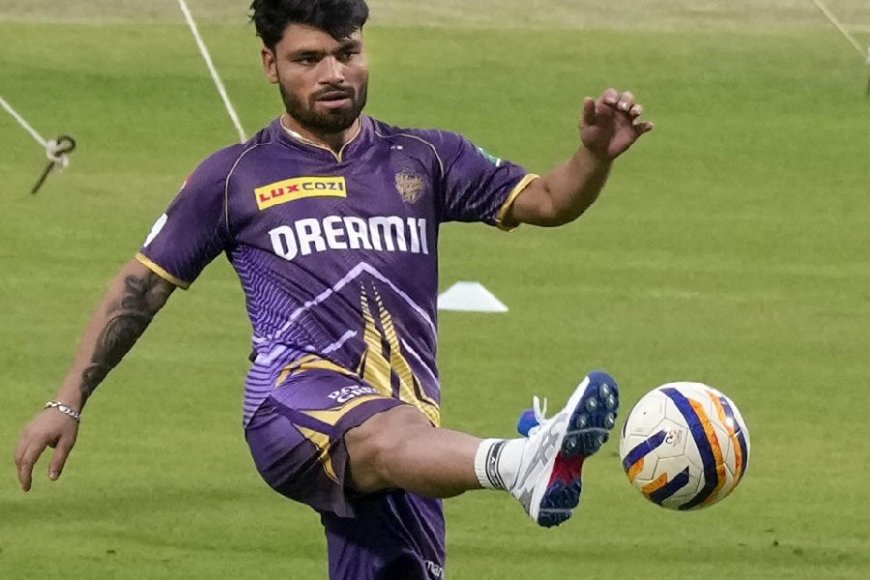IPL's Impact on Cricket: Unearthing Talent and Fostering Stardom
From Yashasvi Jaiswal to Mumbai Indians: The Evolution of Indian Cricket through IPL

Last May, in the sweltering heat of the Indian Premier League, the Kolkata Knight Riders' purple-clad filled Eden Gardens saw brilliant spells from veteran Yuzvendra Chahal and Trent Boult as they reduced the home squad to size.
With 150 needed to win, the Rajasthan Royals' match was in the balance. After losing Jos Buttler for nought in the second over, it was expected that the Royals would play it safe on a challenging surface.
Rather, a 21-year-old with schoolboyish good looks gave the audience a peek of what's to come when he entertained them nonstop with a flurry of fours and sixes. In 13.1 overs, the target was achieved, leaving the KKR camp in shock.
Yashasvi Jaiswal showed off his class once again with a brilliant performance of 98 runs off of 47 balls. A few games prior, at the Wankhede, the opener had signaled his coming by hitting a career-high 124 off 62 balls against the Mumbai Indians. He was unfazed by speed, even throwing Jofra Archer's 150 mph rockets out of the park.
On Friday at Eden Gardens, Venkatesh Iyer (second from left) was part of KKR's training session.
On Friday at Eden Gardens, Venkatesh Iyer (second from left) was part of KKR's training session.
A number of these young players have been thrust into the center of international cricket thanks to Santosh Ghosh's IPL. Shubman Gill, Mohammed Siraj, Hardik Pandya, Jasprit Bumrah, and Mohammed Siraj are just a few of the seemingly unending list of names.
It makes sense why the lucrative league continues to be the most sought-after among professional cricket players.
The highlights of the previous season were Rinku Singh hitting five sixes in the final five balls, two teams successfully chasing 200 runs or less, and an exciting finish to the match that went far past midnight. The spectacle is only going to become bigger.
One could measure the IPL's success over the past sixteen years by looking at the fact that the tournament's valuation increased by around 28% from $8.4 billion in 2022 to $10.7 billion in 2023. The world's top brand valuation consultant, Brand Finance, stated that since the IPL's launch in 2008, the overall brand value has increased by 433%.
With a brand worth of $87 million, the Mumbai Indians continue to be the most valuable franchise, followed by the Chennai Super Kings ($81 million). Next, with respective values of $78.6 million and $69.8 million, are KKR and Royal Challengers Bangalore.
The IPL media rights for the 2023–2027 cycle represent it. With an estimated value of Rs 48,390 crore, the Indian Premier League has surpassed the National Football League in the United States as the second most valuable sporting event. This is a threefold increase from the Rs 16,347 crore that The Walt Disney-Star paid for the event in 2017.
However, what role has the IPL played in India's rise to prominence in world cricket? Is it still the model used to find talent at the local level? Is it comparable to the various football leagues across the globe that continue to serve as the national teams' supply chain?
IPL success does lead to immediate celebrity, and it continues to produce talented athletes. To make the huge leap to the IPL, however, a player must first endure the grind of domestic cricket in order to get recognition.
To see the talented group, scouts from different teams continue to frequent the domestic limited-overs tournaments. Scouts of this kind will always be drawn to events like the Tamil Nadu Premier League, the Vijay Hazare Trophy, or the Syed Mushtaq Ali meet in an attempt to find uncapped talents.
To gain recognition at the domestic level, players such as Suryakumar Yadav, Venkatesh Iyer, Varun Chakravarthy, Jitesh Sharma, Jaiswal, and even Bumrah had to endure the rigors of red-ball cricket. Their tremendous talent in first-class domestic cricket was the driving force behind their entry into the IPL.
In order to succeed at the international level, the league provides uncapped athletes with the chance to interact with the top players in the industry and acquire a variety of tactics pertaining to mental toughness, skill, and match preparation.
Other players, like Paul Valthaaty and Swapnil Asnodkar, have gained notoriety during a specific IPL season before going missing. Based on the IPL, none of the players from India's 2011 World Cup-winning team were awarded an India cap.
While player performances are important, the IPL's success and glory are mostly due to the support of the spectators.
"The game is driven by the fan." IPL chairman Arun Dhumal told The Telegraph earlier this month, "That is my fervent belief... we have seen how IPL has grown over the last 15-16 years to become the second biggest sports league in the world."
"Clearly, as the fans are the ones who are enamored with the game, its structure, the level of participation they witness, and the kind of matches they attend.
That's what's brought the league to that point, where players play to generate excitement around the stadium in addition to merely for financial gain.
IPL is like the mahakumbh for players to get noticed; it will always be a source of drama and live entertainment for spectators. Beneath the glitter, the IPL will continue to exist because of the domestic structure.
Except for the headline, this story has not been edited by Press Time staff and has been published from a syndicated feed.































































